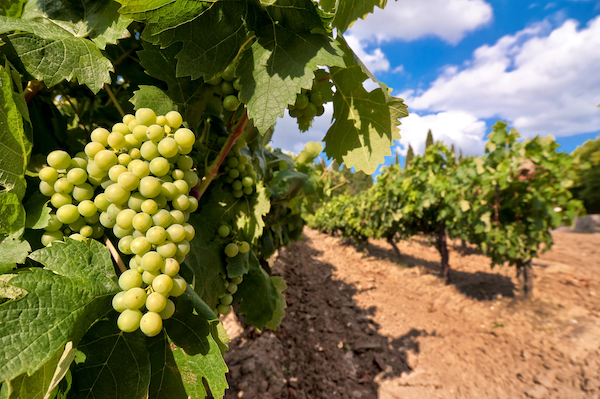The monthly webinar hosted by the Produce Marketing Association’s Southern Africa chapter in conjunction with Beanstalk host Max McGillivray heard of the intensive efforts that the South African table grape industry is making to adapt to what the market wants.
 The Hex River Valley has “a solid four million more cartons” still to be packed this season. Intakes by the end of week 9 stood at over 17 million cartons, therefore SATI is quite confident that, at the least, the lower crop estimate of 20.6 million cartons will be reached.
The Hex River Valley has “a solid four million more cartons” still to be packed this season. Intakes by the end of week 9 stood at over 17 million cartons, therefore SATI is quite confident that, at the least, the lower crop estimate of 20.6 million cartons will be reached.
Week 8 was slow because of logistical constraints, but export volumes rebounded in week 9 and “we’re starting to see a bit of a catch-up in terms of the season being late”, Clayton Swart, South African Table Grape Industry communications manager (right), explained.
It has been a “challenging and rough” table grape season, he said, with the loading tempo at Cape Town harbour slowed down by fog and wind, compounded by container shortages plus Covid.
Rain last week and again this week fell on the mostly Crimson still left to be harvested, it is the most widely planted cultivar in the Hex River. Clayton noted that Crimson withstands rain quite well, with minimal damage expected (although the impact is still being assessed).
 Top left Max McGillivray, top right: Lianne Jones, PMA Southern Africa country manager. Below left: Heidi de Villiers of IFG, below right: Charl du Bois of Capespan (in front of a block of Sweet Celebration)
Top left Max McGillivray, top right: Lianne Jones, PMA Southern Africa country manager. Below left: Heidi de Villiers of IFG, below right: Charl du Bois of Capespan (in front of a block of Sweet Celebration)
Table grape expansion
The area under table grapes in South Africa increased from 13,000ha ten years ago to over 21,000ha today, with a particular increase from 2014 to 2018 (water is a constraint to table grape expansion).
That includes a sizeable increase in red seedless – by 2011 that category made up 29% of the industry’s portfolio, by 2018 it was 40%. There was over the same period a slight decrease in white seedless – from 33% to 27%.
Clayton made reference to the huge expense and big risks taken by table grape growers when renewing their vineyards with varieties of a maximum of 20 years' lifespan in an era of "one year in, one year out" consumer preferences.
Seeded varieties have all but disappeared; only 3% of current vineyards are still seeded grapes.
There is also a greater array of more smaller blocks of patented varieties. Hectare expansion will plateau but volumes will continue to grow because of higher and more consistent yields.
All open varieties are significantly down in acreage: Autumn Royal by 76%, Flame by 52%, Red Globe by 46%, except for hardy Crimson (expected to show its mettle after the rain in the Hex River Valley) of which 35% more hectares have been established over this period.

More patented varieties than open varieties in vineyards
By contrast, patented varieties now make up more than half of all South Africa’s table grape vineyards. Sweet Globe, Autumn Crisp and Sweet Celebration together comprise almost 5% of South Africa’s acreage.
Heidi de Villiers, International Fruit Genetics commercial manager for Africa and the Middle East, presented a few new varieties (Julep has a spicy flavour with a hint of mint, while Kokomo has a tropical flavour) of which there ought to be limited volumes on the market starting in two to three years.
"Due the fact that there was so much red seedless planted over the past few years, there's a shortage of white seedless, and we see this in our new orders for the coming years," she says.
She noted the value of table grapes in reducing children’s sweets (candy) consumption.
 Kandas Cloete (right) is an agricultural economist at the Bureau for Food and Agricultural Policy (BFAP) specialising in horticultural crops like table grapes, of which 89% of production is exported; third biggest contributor to South Africa’s agricultural exports. There are 271 grape producers on 643 production units.
Kandas Cloete (right) is an agricultural economist at the Bureau for Food and Agricultural Policy (BFAP) specialising in horticultural crops like table grapes, of which 89% of production is exported; third biggest contributor to South Africa’s agricultural exports. There are 271 grape producers on 643 production units.
“We see the impact of the exchange rate quite substantially in the table grape industry,” she says. “Real prices in Euro terms are expected to decline slightly and in Rand terms to remain fairly flat. While the exchange rate supports prices, input costs are affected.”
It’s currently at around R60 or just under 7 euro per carton (FOB), according to BFAP’s figures.
Given risk factors like rain, the agency considers table grapes a healthy industry where producers who know what they are doing, will continue to prosper, she said.
Table grapes: very prominent employer in agricultural sector
Charl du Bois, commercial executive at Capespan, gave an overview of the many corporate social responsibility and food relief min which the table grape industry is involved.
Only blueberries employ more people per hectare but of that the area is much smaller; for every thousand hectares of table grape vineyards approximately 2,250 employment opportunities are created.
The South African Table Grape industry has a fund to give black grape growers financial assistance in replacing old varieties with the sought-after new ones mentioned above, in an effort to address barriers to entry for new grape exporters.
The Link LonkMarch 19, 2021 at 08:04PM
https://ift.tt/3s6NgcL
"Challenging and rough" table grape season, but rain impact seems minimal - FreshPlaza.com
https://ift.tt/3eO3jWb
Grape

No comments:
Post a Comment